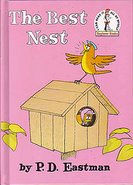On a positive note, these tests didn't find disease-causing bacteria such as E.coli O157:H7, listeria, or salmonella in any of the samples.
"It's never a good idea to have fecal bacteria in your food or water because it means that untreated waste has gotten into them somehow," says food safety expert Marion Nestle. "But only toxic bacteria make you sick, and the good news in this otherwise queasy-making study is that they didn't find any."
No one is suggesting that you stop eating salad. Just take some of the precautions below to make sure you're eating the safest greens possible:
- Always wash salad greens, even if the bag says "prewashed" or "triple-washed." Rinsing won't remove all the bacteria, according to Consumer Reports, but it may remove residual soil. Washing with plain water works as well as anything else, says Nestle. There's no need to use detergent, vinegar, or special produce washes.
- Buy packaged greens as far from their expiration date as possible. In the tests, Consumer Reports found that many packages with higher bacteria levels were one to five days before their use-by date.
Packages of salad that were six to eight days away from expiration date fared better, according to Consumer Reports. (It's also interesting to note that many of the packages with the highest amounts of bacteria contained spinach.) - Choose fresh greens over packaged when you can. Bagging changes the environment in ways that might promote bacterial proliferation, says Nestle. A fresh, whole head of lettuce is usually less expensive than a bag of lettuce too.
Buying local may offer extra protection since greens tend to be fresher so their bacteria haven't had as long an opportunity to multiply, Nestle notes, and this ought to reduce the risks of centralized contamination. However, in the Consumer Reports tests, it didn't make a difference if greens were organic or if the greens were packaged in plastic clamshells or bags.
SOURCES:
1) Environmental journalist Lori Bongiorno.
Lori has written a book, Green Greener Greenest: A Practical Guide to Making Eco-smart Choices a Part of Your Life and it is available on Yahoo! Shopping and Amazon.com.
2) The Conscious Consumer blog
Photo credit Getty ImagesNo copyright infringement intended. All posts are fully cited for source and author. I have provided links back to the original source whenever possible. This blog is not for profit. It is used for my personal and homeschool referencing. It is also shared with friends.
I am so very grateful to the authors, website and blog owners for sharing information, commentary, and knowledge.








No comments:
Post a Comment